Cause
Understanding the concept of cause is important in science as it helps us to comprehend the reasons behind various phenomena and events. A cause is something that makes an event or outcome happen. It is the reason for an action, change, or result.
Types of Causes
There are different types of causes, including:
- Proximate Cause: This is the immediate cause that directly produces an effect. For example, a match igniting a piece of paper is the proximate cause of the paper burning.
- Ultimate Cause: This is the underlying reason for an event or behavior. It delves deeper into the root cause of a phenomenon. For instance, the ultimate cause of a plant wilting could be a lack of water.
Studying Causes in Science
When studying causes in science, it is important to consider the following:
- Cause and Effect: Recognizing the relationship between cause and effect is crucial. Understanding how one event leads to another helps in making predictions and understanding the natural world.
- Experimental Design: In scientific experiments, researchers manipulate variables to observe their effects. This helps in identifying causes and understanding their impacts.
- Critical Thinking: Developing critical thinking skills is essential for identifying and analyzing causes. It involves asking questions, making connections, and drawing logical conclusions.
Study Guide
To understand the concept of cause, consider the following questions and activities:
- Discuss with your students the difference between proximate and ultimate causes, providing real-life examples.
- Engage students in cause-and-effect activities, such as creating simple experiments to demonstrate cause-and-effect relationships.
- Encourage critical thinking by asking students to analyze everyday occurrences and identify potential causes and effects.
- Explore the concept of chain reactions and how one cause can lead to multiple effects.
By exploring causes in various contexts, students can develop a deeper understanding of the interconnectedness of events and phenomena in the natural world.
.◂Science Worksheets and Study Guides Second Grade. Mammals and birds
Study Guide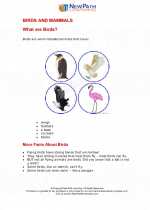 Mammals and birds
Mammals and birds  Activity Lesson
Activity Lesson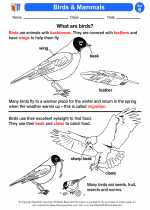 Birds & Mammals
Birds & Mammals  Worksheet/Answer key
Worksheet/Answer key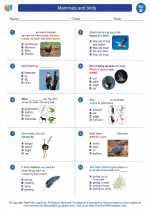 Mammals and birds
Mammals and birds  Worksheet/Answer key
Worksheet/Answer key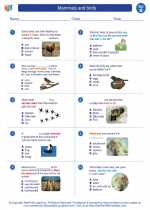 Mammals and birds
Mammals and birds  Worksheet/Answer key
Worksheet/Answer key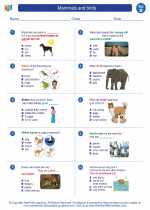 Mammals and birds
Mammals and birds  Worksheet/Answer key
Worksheet/Answer key Mammals and birds
Mammals and birds  Vocabulary/Answer key
Vocabulary/Answer key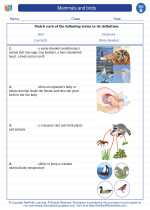 Mammals and birds
Mammals and birds 

 Activity Lesson
Activity Lesson
 Worksheet/Answer key
Worksheet/Answer key
 Worksheet/Answer key
Worksheet/Answer key
 Worksheet/Answer key
Worksheet/Answer key
 Worksheet/Answer key
Worksheet/Answer key
 Vocabulary/Answer key
Vocabulary/Answer key

The resources above cover the following skills:
LIFE SCIENCE (NGSS)
Biological Evolution: Unity and Diversity
Students who demonstrate understanding can:
Make observations of plants and animals to compare the diversity of life in different habitats[Clarification Statement: Emphasis is on the diversity of living things in each of a variety of different habitats.] [Assessment Boundary: Assessment does not include specific animal and plant names in specific habitats.]